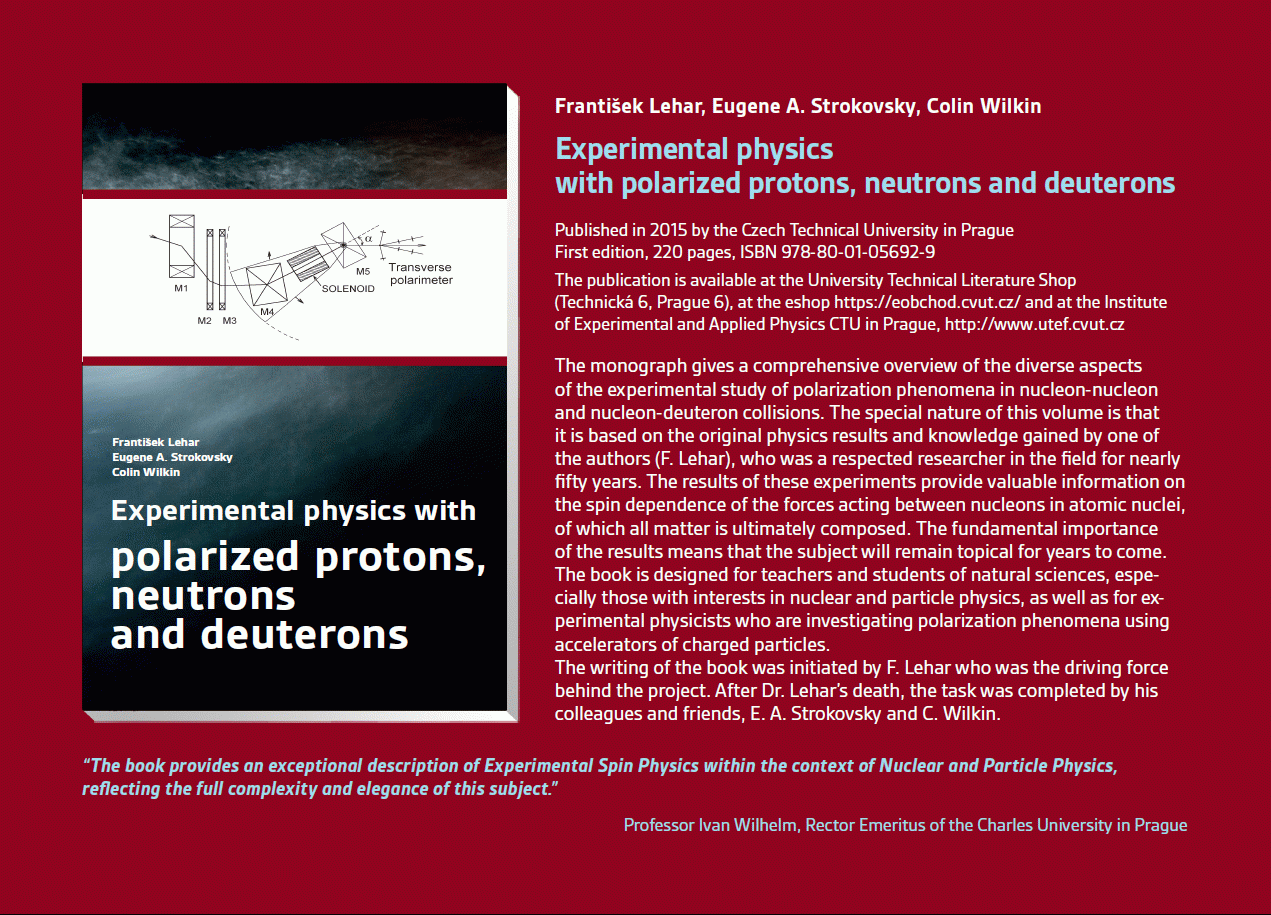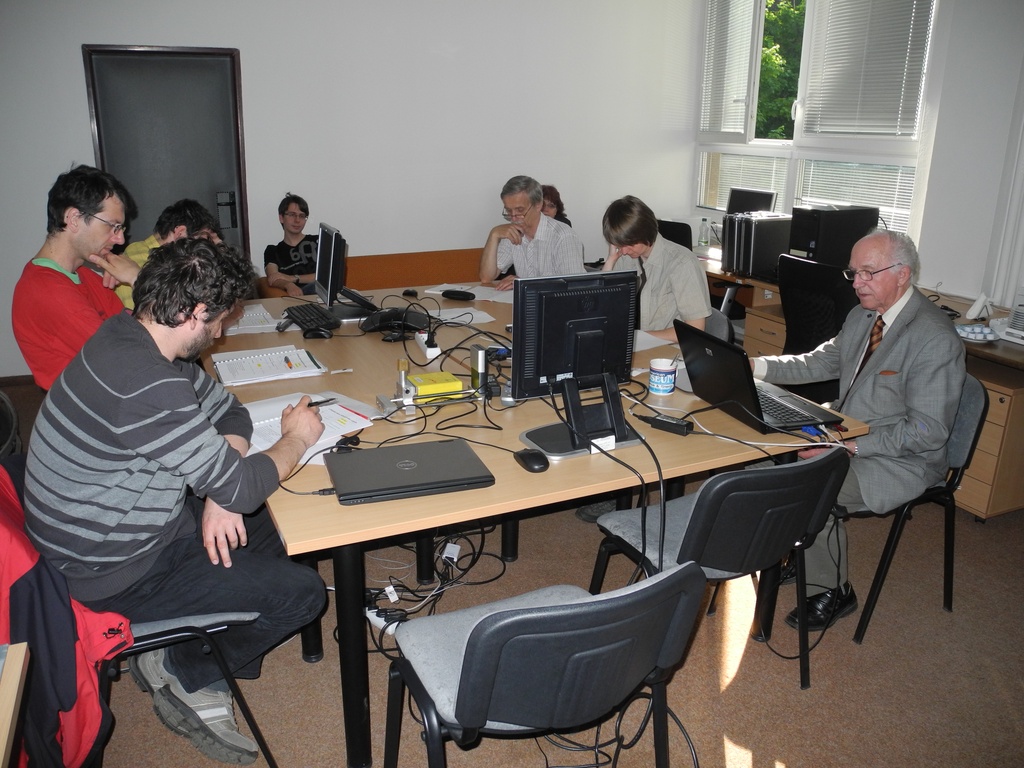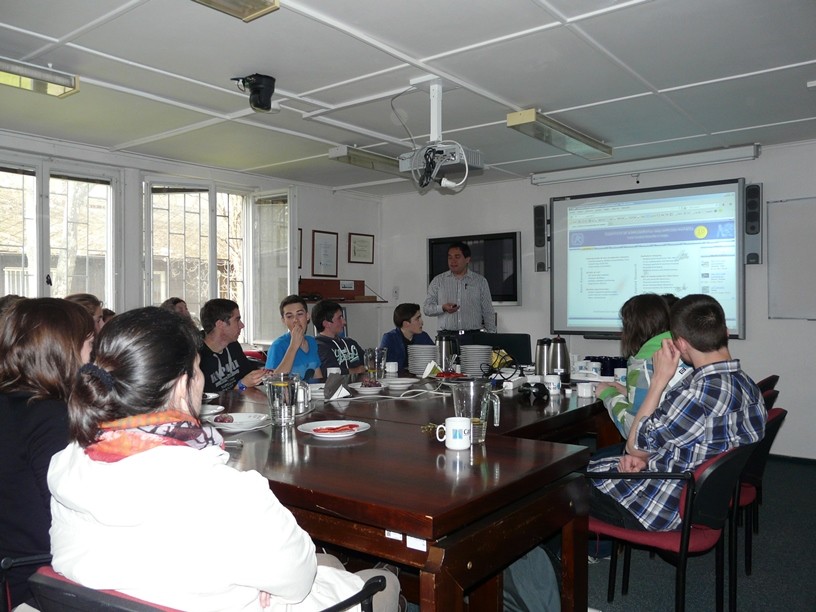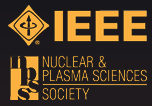Publikace
> Články v impaktovaných časopisech
> 'Low-Energy Protons Scanning of Intentionally Partially Damaged Silicon MESA Radiation Detectors'
Low-Energy Protons Scanning of Intentionally Partially Damaged Silicon MESA Radiation Detectors
Autor
| Houdayer A. | Universite de Montreal, Montreal (Quebec), Canada H3C 3J7 |
| Lebel C. | Universite de Montreal, Montreal (Quebec), Canada H3C 3J7 |
| Leroy C. | Univerzita Montreal |
| Linhart Vladimir, Ing. Ph.D. | UTEF |
| Mareš J.J. | Institute of Physics, Academy of Sciences of the Czech Republic, Cukrovarnicka 10, CZ-16253 Prague 6, Czech Republic |
| Pospíšil Stanislav, DrSc. Ing. | UTEF |
| Sopko Bruno | KF FSI ČVUT |
Rok
2004
Časopis
IEEE TRANSACTIONS ON NUCLEAR SCIENCE, VOL. 51, NO. 6, PART 3, DECEMBER 2004, pp. 3838 - 3844
Web
Obsah
The main aim of this work was to measure the spectroscopic response of intentionally damaged MESA silicon detectors. A uniformly damaged region was created using protons delivered by the University of Montreal, Montreal, QC, Canada, 6-MV tandem accelerator at different energies and fluences. Only the back half of the detectors was damaged. The vacancy density created in the damaged region was built at a level of 7 x 10^15 vacancies/cm^3. The detectors were scanned over their whole volume with protons of well-defined ranges. The response characteristics were studied using protons backscattered from a thin gold foil at nine different primary proton beam energies. The highest
energy was selected for allowing the protons to reach the ohmic side (n+ side). This reach confirms that the detectors thickness is 300 microm, accordingly to the wafer thickness. The scanning of the detectors from the undamaged frontside was performed with three different proton energies of ranges within the undamaged region. Two proton energies were selected for probing the transient region extending between the damaged and undamaged regions of the detectors. Three energies of protons were chosen to probe the damaged region of the diodes. The same set of energies was selected for the study of the detectors spectroscopic features while illuminating the detectors’ backside. The measured spectroscopic responses of the irradiated detectors were compared to the response of the undamaged detector. For frontside illumination, the total charge
collection efficiency (TCCE) was determined close to 100% and 50% for protons stopped in the undamaged and damaged region, respectively. In the case of backside illumination, the TCCE was significantly smaller for protons of low energy, about 15–30% at a depth of 100 microm, and increases up to 80%-85% for the highest proton energy stopped in the detector. The results show that the silicon detectors can be partly and strongly deteriorated by megaelectronvolt protons of fluences of 10^11 p/cm^2.
Granty
| 1P04LA211 | Spolupráce ČR s CERN |
| MSM 6840770029 | Fundamentální experimenty ve fyzice mikrosvěta |
Projekty
Příklad citace článku:
A. Houdayer, C. Lebel, C. Leroy, V. Linhart, J. Mareš, S. Pospíšil, B. Sopko, "Low-Energy Protons Scanning of Intentionally Partially Damaged Silicon MESA Radiation Detectors", IEEE TRANSACTIONS ON NUCLEAR SCIENCE, VOL. 51, NO. 6, PART 3, DECEMBER 2004, pp. 3838 - 3844 (2004)
Hledat
Události
21.-22. 11. 2014
Seattle, USA
8-15 Nov 2014
Surrey, Velká Británie
8. září 2014
9. září 2014
24. 4. 2014
3. 4. 2014
Seoul, Korea
27 Oct - 2 Nov 2013
Paris
23-27 June 2013
Anaheim, USA
29 Oct - 3 Nov 2012






 Experimental physics
with polarized protons, neutrons and deuterons
Experimental physics
with polarized protons, neutrons and deuterons Progresivní detekční metody ve výuce subatomové a částicové fyziky
na ZŠ a SŠ
Progresivní detekční metody ve výuce subatomové a částicové fyziky
na ZŠ a SŠ NSS MIC IEEE Conference
NSS MIC IEEE Conference Konference SEPnet, CERN@school
Konference SEPnet, CERN@school Lovci záhad - spolupráce ČT a ÚTEF
Lovci záhad - spolupráce ČT a ÚTEF Progresivní detekční metody ve výuce subatomové a částicové fyziky na ZŠ a SŠ
Progresivní detekční metody ve výuce subatomové a částicové fyziky na ZŠ a SŠ Návštěva v rámci projektu „Listening to the universe by detection cosmic rays“
Návštěva v rámci projektu „Listening to the universe by detection cosmic rays“ NSS MIC IEEE Conference
NSS MIC IEEE Conference 15thIWORID
15thIWORID NSS MIC IEEE Conference
NSS MIC IEEE Conference